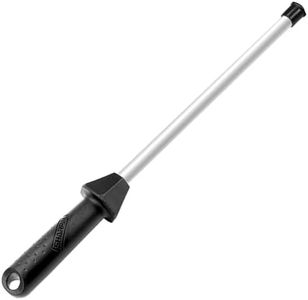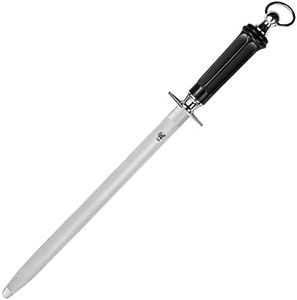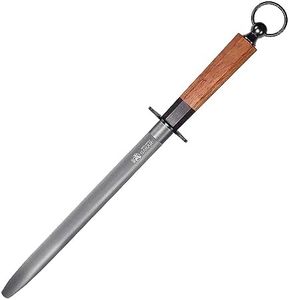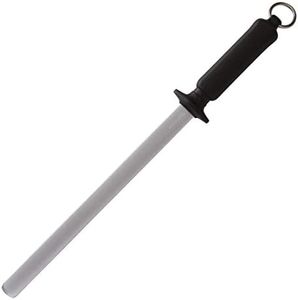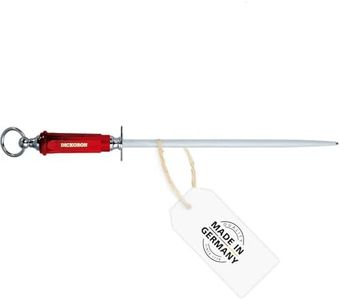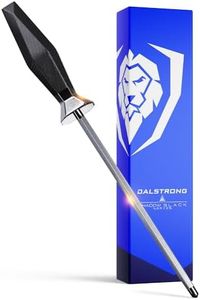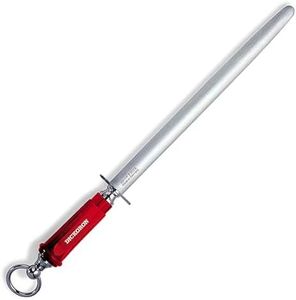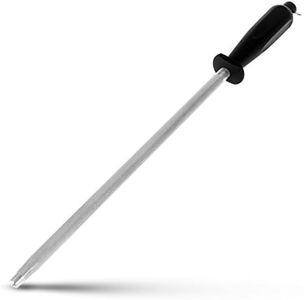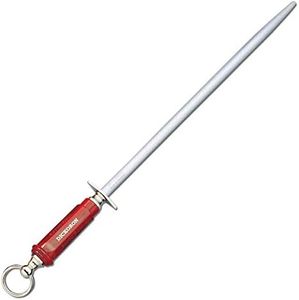We Use CookiesWe use cookies to enhance the security, performance,
functionality and for analytical and promotional activities. By continuing to browse this site you
are agreeing to our privacy policy
10 Best Honing Steel For Knives
From leading brands and best sellers available on the web.Buying Guide for the Best Honing Steel For Knives
Choosing the right honing steel for your knives can help maintain the sharpness of your blades and make kitchen tasks much easier. A honing steel doesn’t actually sharpen a knife by removing metal, but instead realigns the edge, keeping it effective and safe. When buying a honing steel, it’s important to consider several specifications to ensure you get the best fit for your knives and your routine. Understanding each key feature will help you confidently select a honing steel that matches your needs, ensuring the longevity of your knives and ease of use in the kitchen.MaterialThe material of a honing steel determines both its durability and how it interacts with your knives. Most honing rods are made from stainless steel, ceramic, or diamond-coated steel. Stainless steel is the most common and is effective for regular maintenance on most kitchen knives. Ceramic rods are gentler, making them good for fine honing, especially with harder or more delicate blades, while diamond-coated steels are very abrasive and can also sharpen slightly, which is better for more worn edges. When choosing, consider the types of knives you own: if most are standard kitchen knives, stainless steel is typically suitable; for premium or very hard knives, ceramic may be better; and if you want quick, aggressive realignment along with slight sharpening, diamond-coated is ideal.
LengthThe length of the honing steel is important for both safety and effectiveness. Honing steels typically range from 8 to 12 inches. A longer rod provides a larger surface for honing, making it easier to maintain larger knives and improve handling comfort, while a shorter rod can be more convenient for storage and for smaller blades. To pick the right length, match the rod to your largest knife: generally, the honing steel should be at least as long as your longest knife, ideally an inch or two longer, to ensure smooth, complete strokes.
ShapeHoning steels come in various shapes, with the most common being round, oval, and flat rods. Round rods are traditional and sufficient for most home cooks, offering good contact and control. Oval rods have a wider surface, which can help guide the knife edge more easily and cover more area, suited for frequent use or larger knives. Flat rods are less common but offer even, consistent honing, especially for those who like precise control. Consider your comfort and the types of blades you use most; round is standard, oval is versatile, and flat is for those wanting a steady, even surface.
Handle DesignThe handle design affects how safe and comfortable the honing steel is to use. Look for a comfortable, non-slip grip that allows you to maintain control even with wet hands. Many handles also feature a finger guard to protect your hand from accidental slips. Choose a handle that feels secure in your hand and matches your dominant hand, as a good grip is key to both effectiveness and avoiding accidents.
Groove TextureThe texture on the honing rod guides how aggressively it realigns your knife’s edge. Heavily grooved or ridged rods provide more friction and pressure, suitable for knives that are used often and need regular realignment. Smooth or lightly textured rods are best for finishing and maintaining an already sharp edge. For most users, grooved rods offer a good balance, but if you maintain your knives frequently or they are delicate, a smoother rod might be preferable.
Weight and BalanceA well-balanced honing steel should feel stable and not too heavy or too light in your hand. This helps you maintain control during honing and reduces fatigue in long kitchen sessions. If you have smaller hands or less wrist strength, opt for a lighter honing steel; if you want a sturdy, durable feel, a bit more weight might be helpful. Always try to get a feel for the balance—it should feel like a natural extension of your arm.
